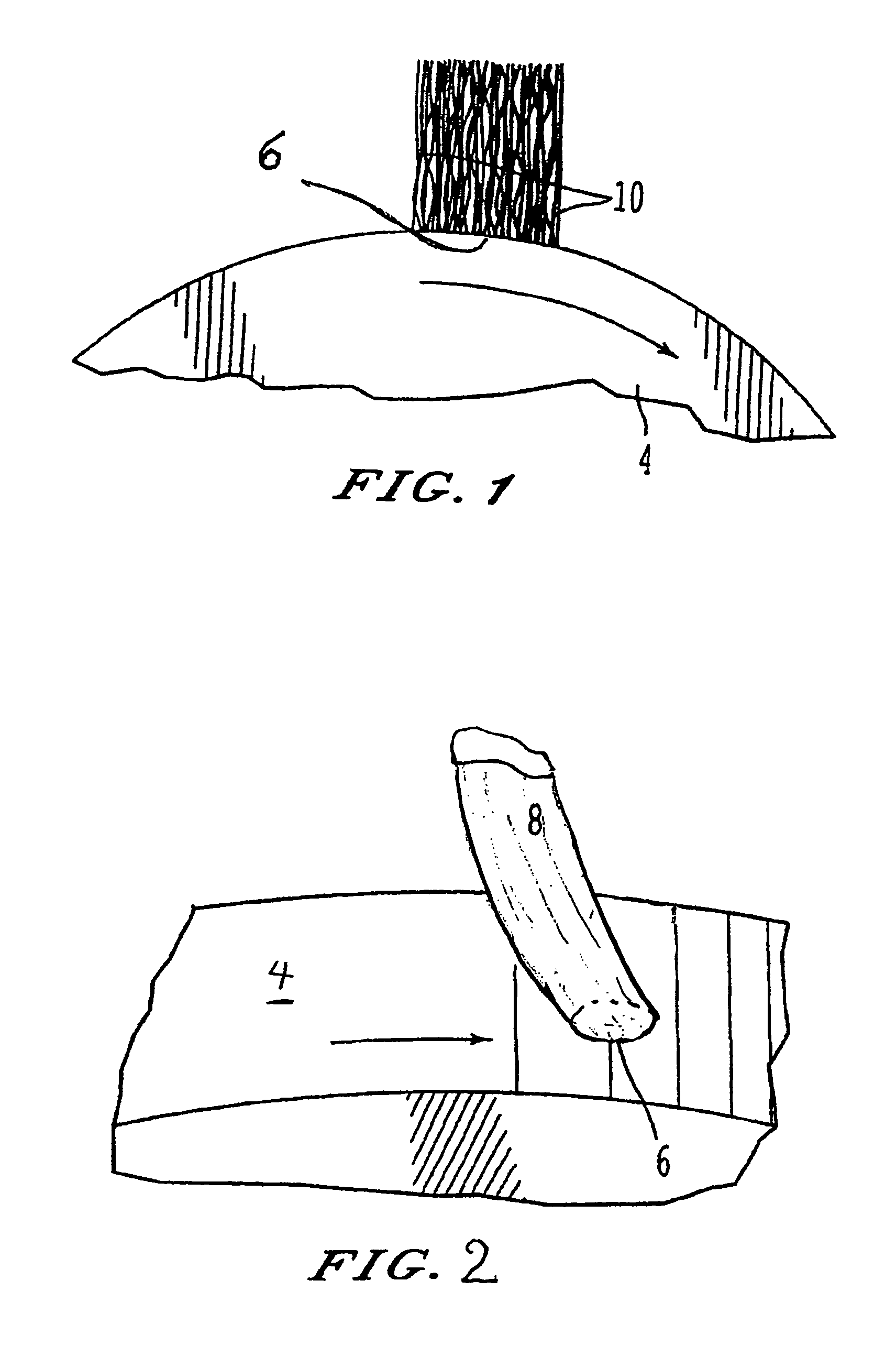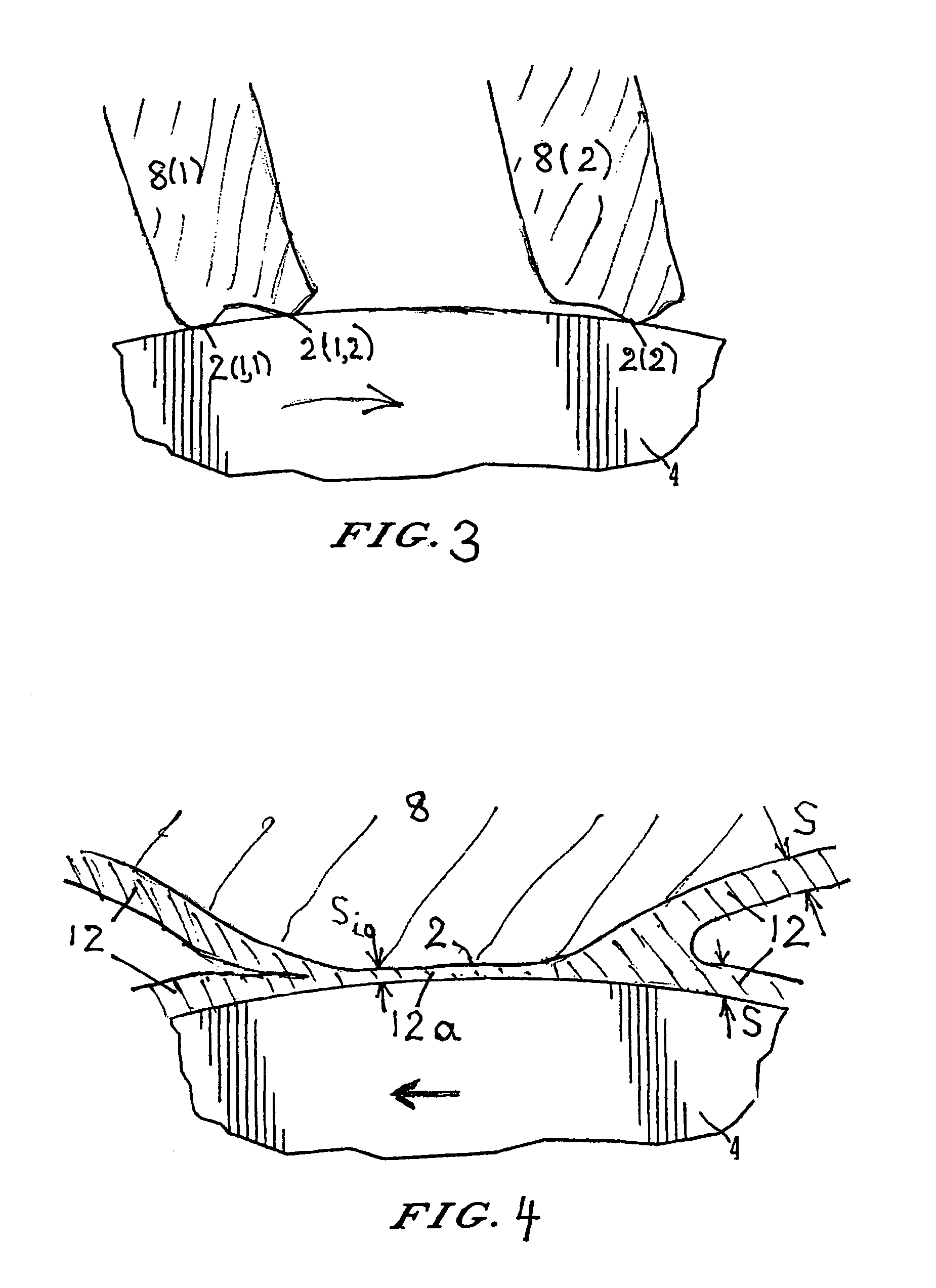Metal fiber brush interface conditioning
a technology of metal fiber brushes and interfaces, applied in current collectors, dynamo-electric machines, electrical equipment, etc., can solve the problems of reducing the life of brushes, so as to increase the current density and/or sliding speed of brushes, and reduce wear. the effect of the rate of deterioration
- Summary
- Abstract
- Description
- Claims
- Application Information
AI Technical Summary
Benefits of technology
Problems solved by technology
Method used
Image
Examples
examples
[0206]Experiments on a range of materials to-date have shown that successful conditioning film materials may on occasion (but do not typically) lower the friction coefficient, typically will reduce the wear rate, and can significantly reduce or eliminate brush polarity effects. Table 1 in FIGS. 7A to 7C presents relevant data. As an example, in an experiment extending over several days, two metal fiber brushes with an approximately SC=1.4 μm thick surface layer on the interior fiber surfaces of “Tip Top” glass cleaner, exhibited average dimensionless wear rates of 4×10−11 and 5×10−11 in the open atmosphere at v=16 m / sec sliding speed and current density j=20 to 40 A / cm2. The friction coefficient was μ≅0.4, and the film resistivity ranged about σF≈2.6×10−12 Ωm2 and σF≈5×10−12 Ωm2 on the positive and negative brush, respectively.
[0207]Brushes in Table 1 (see FIGS. 7A to 7C) marked as not sensitive to humidity and temperature are those whose film resistivity and friction changed only b...
PUM
 Login to View More
Login to View More Abstract
Description
Claims
Application Information
 Login to View More
Login to View More - R&D
- Intellectual Property
- Life Sciences
- Materials
- Tech Scout
- Unparalleled Data Quality
- Higher Quality Content
- 60% Fewer Hallucinations
Browse by: Latest US Patents, China's latest patents, Technical Efficacy Thesaurus, Application Domain, Technology Topic, Popular Technical Reports.
© 2025 PatSnap. All rights reserved.Legal|Privacy policy|Modern Slavery Act Transparency Statement|Sitemap|About US| Contact US: help@patsnap.com



